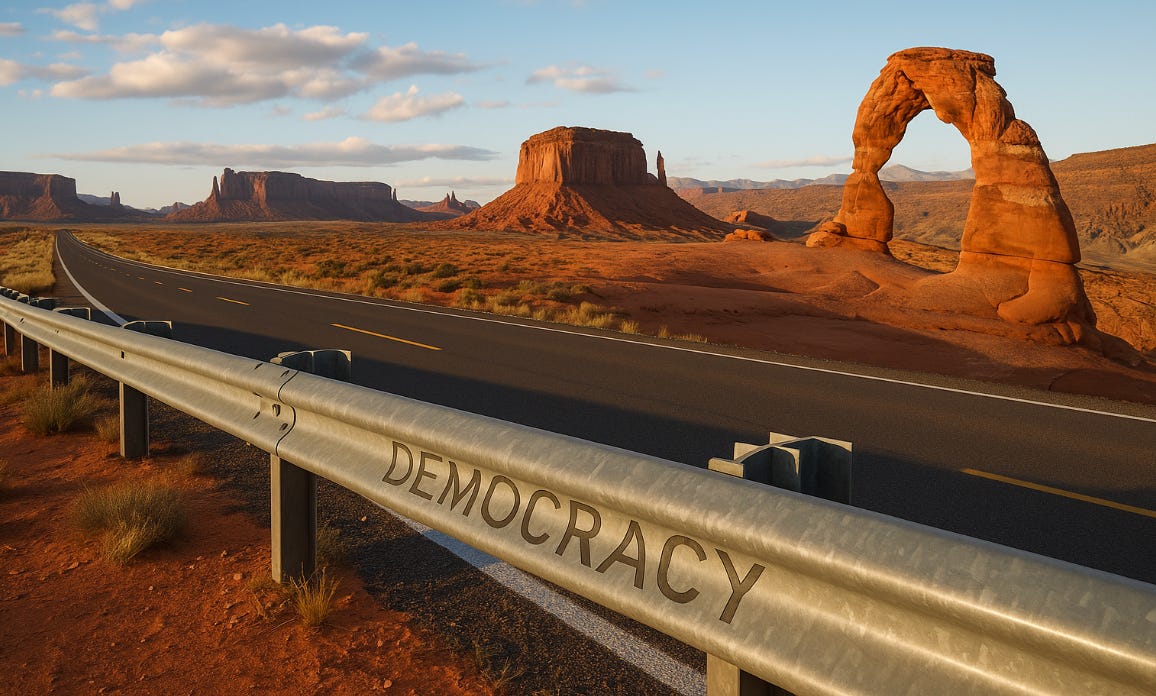A Win You Can Actually Feel
When legislators ignore the will of the people, it's time to call in the reinforcements
Every movement needs proof. Utah just gave us some more.
This story started back in 2018 when Utah voters passed Proposition 4, which said, in plain terms, that redistricting in the state should follow neutral rules, respect real communities, and avoid partisan gerrymandering. It also created an independent redistricting commission as a voter-centered backstop.
The legislature refused to accept that. In 2020, it repealed Prop 4 and drew its own congressional map in 2021, a map the court later found was the product of that unconstitutional repeal. So reformers sued, represented by our strategic partner Campaign Legal Center (CLC).
The goal was simple: put the voter-approved rules back and block the gerrymander.
On August 25, 2025, the district court agreed, ruled that the legislature had violated the Utah Constitution when it repealed Prop 4, struck down the 2021 map, and told everyone to get a lawful map in place for 2026. That was a big, clear win that I wrote about here:
Yet, the legislature tried again anyway. In October 2025, it passed S.B. 1011 to narrow Prop 4’s anti-gerrymandering standard and S.B. 1012 to enact its own map The problem was obvious to the court: the new map was drawn with partisan data, it favored the majority party, and it did not follow the neutral criteria Utah voters had already locked in.
This week, the court said no, blocked the legislature’s map, struck down S.B. 1011 as an unconstitutional impairment of Prop 4, and ordered a map from the plaintiffs to be used instead. That is an unusually strong order for a state trial court, and it tells you how seriously the judge took the voters’ initiative.
What did the plaintiffs offer? Two options. Map 1 was pulled from an ensemble of 10,000 computer-generated, partisan-blind maps that followed Prop 4’s priority list — population equality first, then minimizing municipal splits, then the rest. It split only one city and lined up closely with the earlier independent commission plans, which told the court it was genuinely neutral. Map 2 was a “least change” version of the legislature’s own map but cleaned up to meet Prop 4. The court picked Map 1. That means Utah is getting a map for 2026 that was built to follow voter-approved rules, used no partisan data, and treated city splits like they matter.
This matters beyond Utah
This case demonstrates that the rule of law and separation of powers still matter: a citizen-led reform survived a legislative rollback and got enforced in court in a deeply Republican state, which makes it useful for a center-right, rule-of-law audience.
It also matters because of what the legislature tried to sneak in with S.B. 1011. They didn’t just draw a new map; they tried to change the measurement system so future maps would be judged by partisan-heavy metrics that would have made gerrymandering easier to justify. The court called that out directly and blocked it, which protects Prop 4 from death-by-technical-amendment. That’s a warning shot to other states: if voters say “no partisan favoritism,” lawmakers can’t quietly rewrite the math to make favoritism look neutral.
There’s also a 10,000-foot lesson here. Our team didn’t win because they were loud; they won because they were prepared. They had compliant maps ready. They had expert support. They could show overlap with the independent commission’s work. They could prove the legislature’s plan split three municipalities into 11 pieces while theirs split one city once. Courts like that kind of specificity. Movements should, too. This is a playbook that can travel.
Where Bright America fits
This type of work rarely looks glamorous. It looks like a successful 2018 initiative, followed by a three years of lawsuits as lawmakers sought to ignore it, followed by an August 2025 win, followed by the legislature trying again, followed by this week’s order that finally locks in a fair map for the 2026 election. If no one documents that, lifts it up, and connects it to a national audience, people conclude “nothing is happening.” We know something is happening — a ton is happening, and this is just one example of the hope that is there to be found.
Paid subscribers and donors to Bright America are the people who keep that lane open. You make it possible for us to fuel these state-level and federal fights, to explain them in plain language, and to show other leaders how to use the same tools. So here’s the ask: upgrade or give, and share this Utah outcome with one person who thinks no one is in the arena. Tell them this community was watching, understands the stakes, and plans to keep showing up.
This is the kind of story people say doesn’t happen anymore. They say power always protects itself. They say no one is really pushing back. Here, the pushback won. That’s the headline for our community: the guardrails held because people insisted on it.




This is very encouraging news ! I applaud Utah for teaching the rest of the country that fair is fair. I wish we could get something like this going here in Texas. It appears we wrote the book on gerrymandering here.
363429. Uh Oh, Austin, please don't show a super highway so close to those delicate arches in Utah. That rendition is not real and tends to desecrate the beauty and peace of those locales. Only local, unobtrusive roads and foot trails approach thee arches.